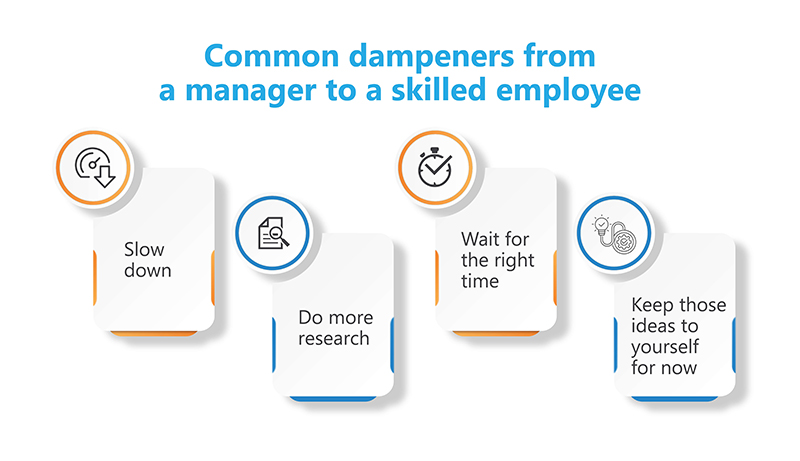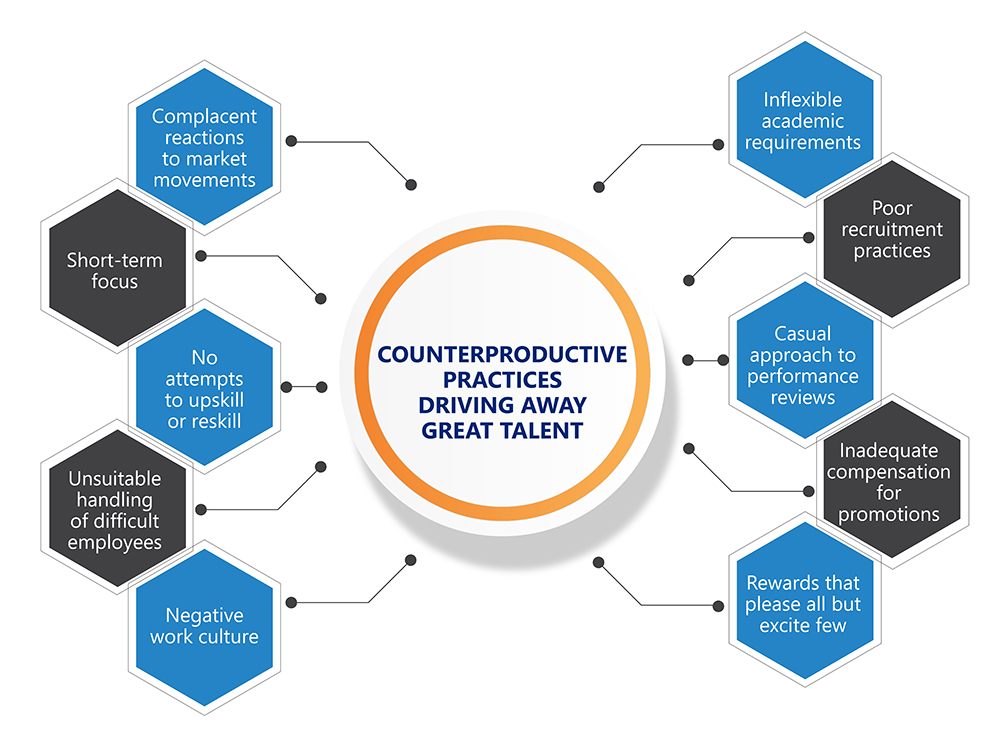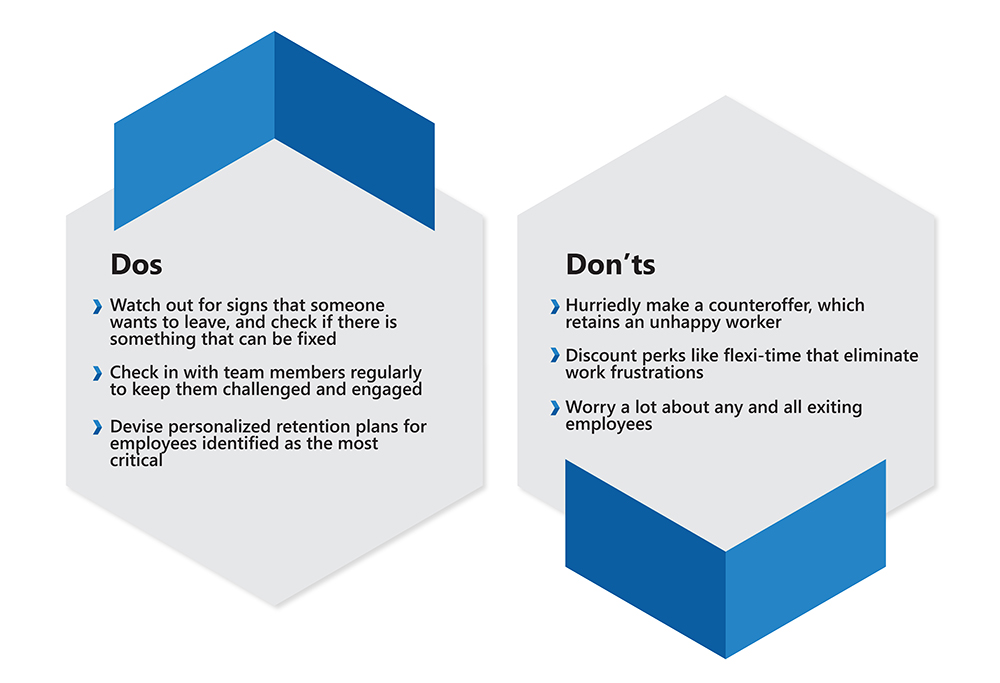
Inquire of any leader at a top organization about his/her most valuable asset, and the most common response will be “people”. Research backs this up – according to a Kronos study,
Improved retention is high or critical priority over the next five years for 87 percent of leaders.
Actions, as they say, speak louder than words though, and no real concerted effort supports this contention. If one company invests heavily in managing talent, many others do not.
A talented employee is someone who the manager can count on to take initiative, be a self-motivated performer, and regularly brings out the right results. It follows that losing such a person is a nightmare – expected or unexpected, it is among the talent management challenges that stresses leaders. Replacing talented people is not cheap, and the cost also includes the skills and insights they take to their greener pastures. All other talent management efforts come to naught if talent flies the coop.
Managers often are unclear on how to take care of their talented people. Inadvertently or otherwise, great performance is dampened or the person gets cause to seek better opportunities elsewhere.

Ideally, an employer would want to focus on employee engagement and keeping them happy, so they do not want to leave. When talented people leave their employer(s), morale and productivity go down, and workload per person as well as costs of recruitment and training go up. The transition of onboarding new hires can thus be an expensive talent management challenge.
Here are the costs of employee turnover:
Stellar talent within a firm is the bunch of people that leverages innovative mindsets, works dedicatedly toward a bigger vision, and ups profits. Such employees seek at least as much investment in them from the talent management team as the effort they put in at work. With demographic trends, globalization of business, and poor leadership development within firms, managers will find it increasingly tough to hold on to great talent.
If a company wishes to not lose great talent, here are some common practices it must avoid like the plague:

Inflexible academic requirements: For years, hiring criteria include – for instance – four-year degrees, instead of looking at just the skills the candidate has. It is important to recognize that education is a lifelong process, and candidates must have employable skills rather than fancy degrees.
Poor recruitment practices: Companies often ghost candidates, are not transparent, include several hurdles in the application process, or put the candidates through several other hoops. This could point to the likelihood of a poor work environment after joining.
Casual approach to performance reviews: Effective performance reviews are aligned with job descriptions; however, these need effort, or in truth use hard-to-measure criteria, include no training, and have opaque evaluation parameters. Companies must better these practices, and employees too should keep track of their performance.
Inadequate compensation for promotions: Hikes for outperforming internal employees are often capped arbitrarily, even though hiring an external candidate could entail a higher overall cost than adequately compensating a proven internal candidate. It often leaves joining another company as the only way to get a proper hike.
Rewards that please all but excite few: Rewards often tend to be distributed between all employees, rather than giving extra consideration to those who rise to the top. Without proper incentives, employees will slowly but surely just regress to an average level of performance.
Negative work culture: Poor diversity suppresses certain groups or inhibits their success, and could drive talented people away to a place where there is more employee engagement and appreciation.
According to Gallup, 70 percent of employees are disengaged at work.
Social media has made calling out such employers easier, and employees will seek workplaces whose values align with their own.
Unsuitable handling of difficult employees: Difficult employees often get the easy way out, being transferred to different teams rather than being put through performance improvement plans or being terminated. Masking the consequent excess workload for existing team members as reward for good work only serves to discourage them.
No attempts to upskill or reskill: Technology has been advancing at a record pace even ahead of the pandemic, and status quos had been proven to be unsustainable in the long term. Top 10 jobs, for instance, change every few years, with old ones often ceasing to even exist. Employees require reinvention, for which they require opportunities to upskill or reskill.
Short-term focus: Companies often focus on short-term gains instead of long-term solutions, and a company that does not evolve in a future-ready direction, its talented people will start to look elsewhere.
Complacent reactions to market movements: No business is in truth too big to fail, and restrictive internal systems make adaptability and agility difficult to implement. Having to toe the regular line is a surefire way to crush motivation.
An exiting employee may seem like a surprise, but is often the culmination of a slow buildup ignored over time. The following are some proactive measures that could help workers enjoy work and appreciate the organization and its leadership:
Dos and don’ts of retaining great talent

Bringing about change that leads to measurable improvement in retention of talented people requires effort and time from top leaders. They must be closely clued in to the happenings across organizational levels, as they cannot really cross the bridge when they come to it in the case of their most talented people. This is the only way to develop a credible reputation by doing developement of talent, not an ignorer of it.
Discover how AI is reshaping talent management with key insights on:


CredBadge™ is a proprietary, secure, digital badging platform that provides for seamless authentication and verification of credentials across digital media worldwide.
CredBadge™ powered credentials ensure that professionals can showcase and verify their qualifications and credentials across all digital platforms, and at any time, across the planet.

Please enter the License Number/Unique Credential Code of the certificant. Results will be displayed if the person holds an active credential from TMI.